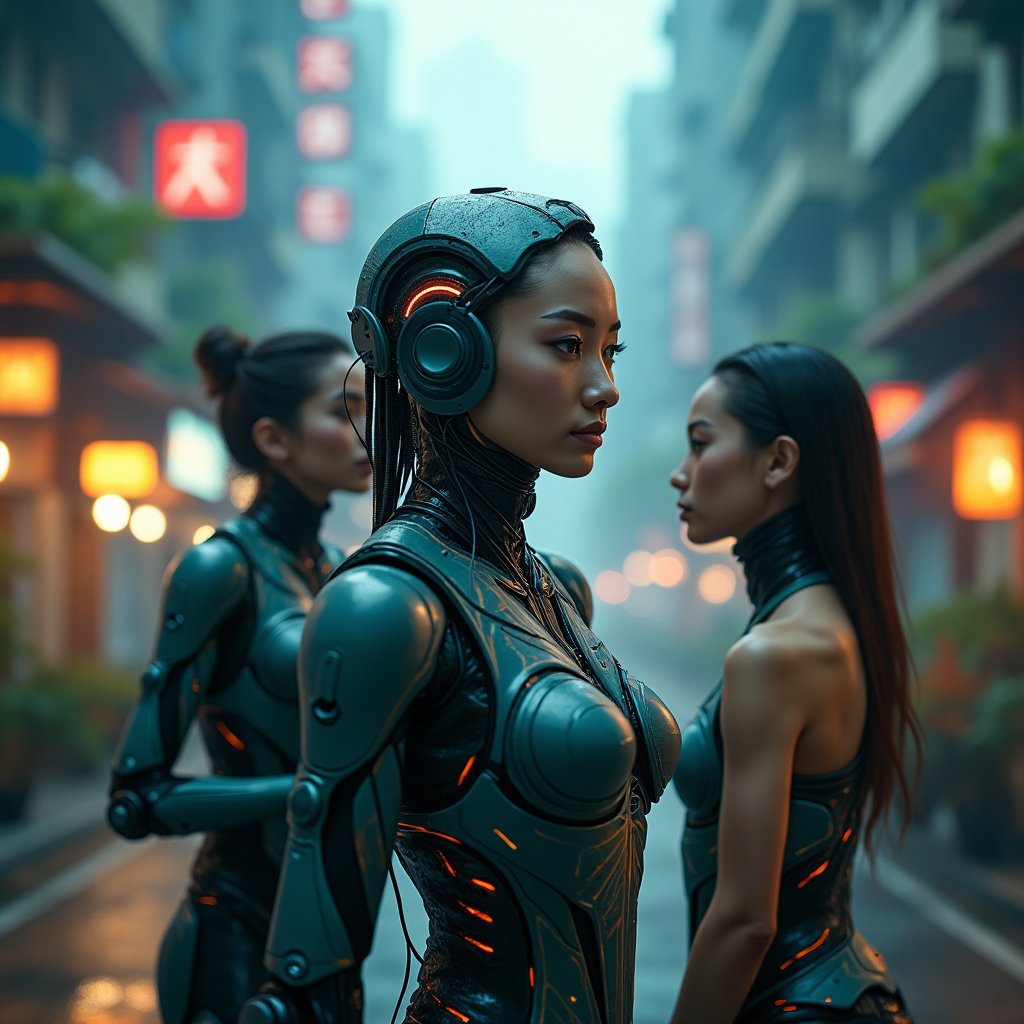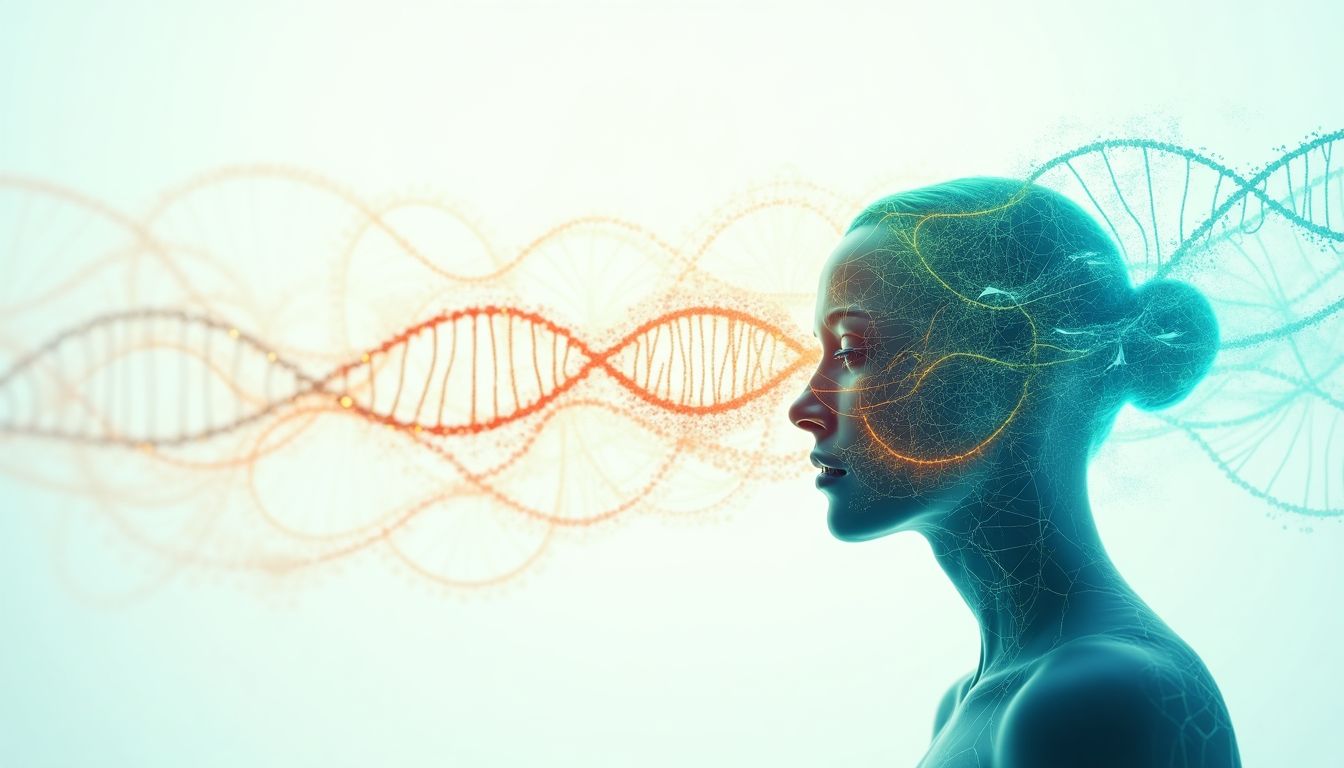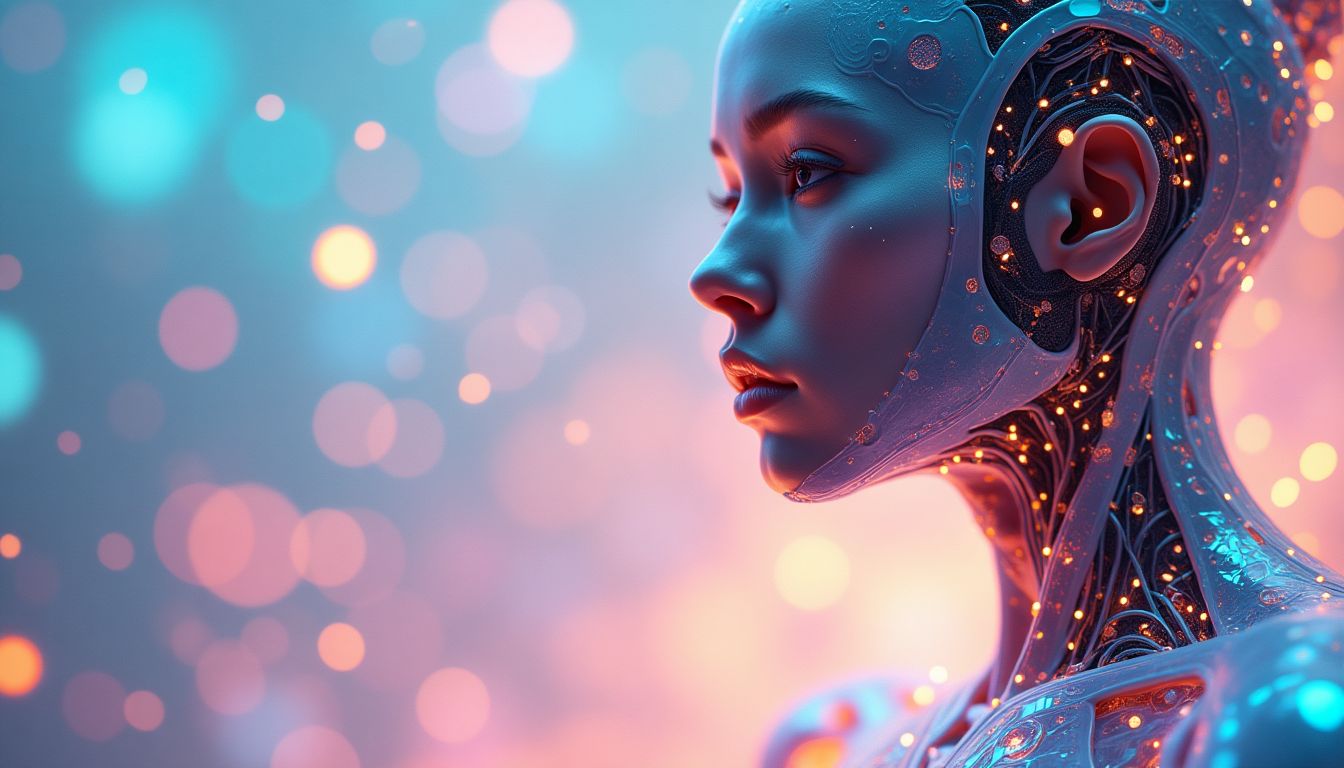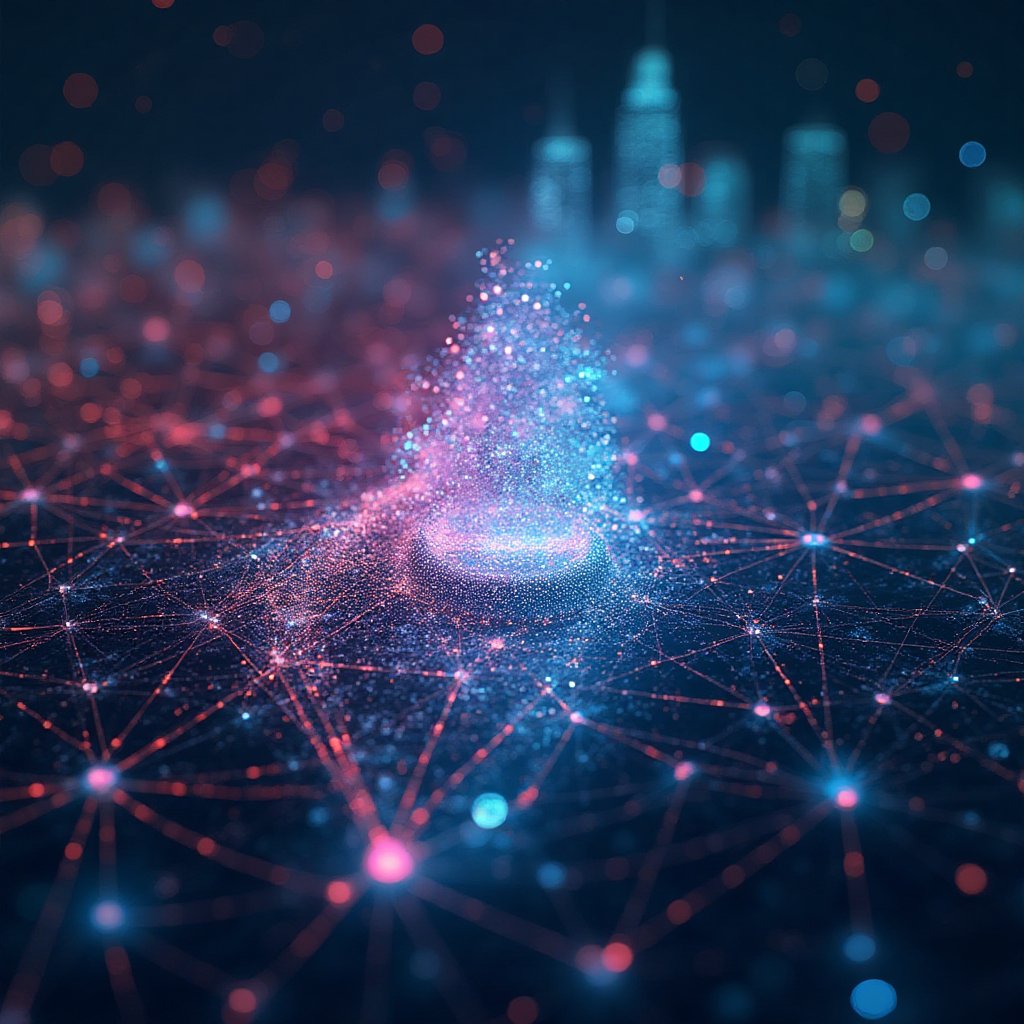Introduction: The Dawn of a New Era
The greatest advances of mankind have come not from the innovations of machines, but from the imagination of the human mind. — Unknown. This quote might seem whimsical, but it speaks volumes as we stand at a turning point in our evolution. We've reached a moment where the lines dividing our organic selves from the technological world are beginning to blur. What if we told you that the future might hold a new species altogether, one that seamlessly marries our DNA with advanced machinery? Imagine life as you know it, rewritten in binary code mixed with the squishy goodness of human flesh. It's a wild thought, but the scientific community is foot-deep in discussions about this idea, with thinkers like Jenna Bieman, Kevin Kruse, and the legendary Ray Kurzweil pondering these transformations. Are we ready to obliterate our biological constraints in favor of a shiny, upgraded future?
As we poke and prod at the ethics and responsibilities of wielding such technology, we must ask ourselves: Is a post-biological future our glorious destiny, or a potential ticket to chaos?
1. The Journey Toward Post-Biological Humanity
Humanity has always been on a relentless journey of discovery. Just look at our progress – we’ve gone from bashing rocks together to sending humans to the moon and beyond. Today, our adventurous spirit is zeroing in on our very own biology. With each new gene-editing tool – like the CRISPR we’ve all heard so much about – we inch closer to a reality where we might one day redefine what it means to be human. Exciting, right? But hold on, because with great power comes... well, you know, a whole lot of ethical questions.
1.1 Historical Context of Genetic Engineering
To understand the road ahead, let’s take a brisk jog down memory lane. The adventure into genetic manipulation began way back in the early 1970s when scientists first began to understand DNA. Fast forward a few decades, and the revelation of the double helix structure, thanks to the brilliance of James Watson and Francis Crick, was just the appetizer. Along came advances like recombinant DNA technology and a splash of *genetic engineering*, turning us into biological sculptors capable of tweaking the very code of life. The introduction of CRISPR in 2012 unlocked a whole new toolbox, allowing for precise cuts and changes in DNA. Now we find ourselves wondering: what else can we do, and at what cost?
1.2 The Rise of Cybernetics and Machine Integration
Next up: the rise of *cybernetics*. You might be picturing something out of a sci-fi movie, maybe your favorite coffee shop experiencing a robot takeover. But in reality, we're witnessing the dawn of brain-machine interfaces and cybernetic enhancements. This technology is already here and subtly transforming our lives. From smartwatches to prosthetics that connect to our nervous system, machines are helping humans extend not just life, but the quality of it. The question lurks in the background like a nosy cat: how much integration is too much? Will we end up as a society of cyborgs, or are we simply enhancing our humanity? Only time will tell!
2. The Convergence of Genetics and Technology
The fusion of biological and technological systems is not just in the realm of science fiction; it's a reality unfolding right before our eyes. Imagine a world where your smartphone could not only connect you to friends but also enhance your brain's abilities. Sounds sci-fi, right? But this shift is happening now. The implications of this convergence present both extraordinary possibilities and significant challenges. So, let’s dig deeper!
2.1 Genetic Modifications: Enhancing Life
Genetic modifications have moved from the pages of dystopian novels to actual labs. For example, tools like CRISPR allow scientists to edit genes with the precision of a surgeon wielding a laser scalpel. Imagine a future where genetic diseases could be edited right out of existence. We could enhance physical abilities and even cognitive skills! But before you sign up for a brain upgrade, keep in mind the ethical concerns lurking in the background, like playing God in a game we don't fully understand.
2.2 Machine Integration: Extending Life
Speaking of sci-fi, let’s chat about machines. Technologies like Neuralink are pushing the envelope on what it means to be human. We’re seeing wearable tech, brain-machine interfaces, and even bionic limbs designed to enhance our abilities and find new ways to live longer and healthier lives. It's as if Iron Man and Wolverine teamed up to revolutionize health! But how do we keep our humanity intact while we’re busy becoming super beings? That's a question worth pondering.
3. Ethical Implications of Post-Biological Existence
With great power comes great responsibility, and boy, do we have some power! The advent of a post-biological humanity raises numerous ethical questions about identity, consent, and the nature of humanity itself. Let’s dive into this ethical quagmire before we accidentally create a world where everyone's wearing a cape and we have to follow superhero ethics!
3.1 Redefining Human Identity
What does it mean to be human in a world where machines supplement our physical and mental attributes? Are we still humans, or are we part of some advanced species that barely resembles the ones who roamed Earth a few centuries ago? Some theorists argue that our essence can remain intact, while others worry we might just become shiny, emotionless robots. It’s like upgrading from a vintage car to a shiny sports car—sure, it runs faster, but where’s the soul?
3.2 The Risk of Inequality
And let’s not forget the potential for a new class divide. As enhancements become available, will they only be accessible to the wealthy? Picture a world where the rich can afford cognitive boosts while the rest of us are stuck with regular human brains. Talk about a high-stakes game of inequality! We might end up with a new social structure that divides not just based on wealth, but on genetic enhancements. Who will want to be a part of this upgrade club, and how can we ensure everyone is included?
4. Societal Impact of a New Species
As humanity steps into a future filled with possibilities, the emergence of post-biological beings will undoubtedly reshape society. This transformation will not just change how we live but also how we interact, love, and work. Let's dive into how society will shift when some of us become part human and part machine, and how these changes will affect our relationships and our workplaces.
4.1 Changes in Employment and Economy
As post-biological humans integrate more seamlessly with machines, we can expect significant shifts in the job market and the overall economy. Here’s what might happen:
- Increased Productivity: Enhanced cognitive abilities and physical strength will likely lead to a boost in productivity, allowing people to achieve more in less time.
- Job Transformation: Traditional roles may shift. For instance, tasks which require precision could be handled better by enhanced humans, while other roles may be taken over by AI.
- New Industries: A wave of new industries will emerge around genetic engineering, machine integration, and even caring for the newly enhanced. Think about careers that don’t even exist today!
These changes wouldn't only reshape jobs; they could change how we understand work itself. For instance, if our physical capabilities are enhanced, will we still value manual labor the same way? This evolution might also change what we expect from education. Schools and universities will need to adapt their curriculums to prepare young minds for the future. Programs about ethics in tech will likely gain importance. That’s where you might want to check out the Edutopia's Technology Integration Guide for insights.
4.2 Transforming Relationships and Society
As the lines blur between humans and machines, the way we view relationships and social interactions will also change. It’s fascinating to imagine how our connections might evolve. Here are some possible impacts:
- Identity and Connection: What does it mean to share your life with someone who has both biological and mechanical traits? Could a human-machine hybrid feel love in the same way we do?
- Social Acceptance: Challenges may arise regarding acceptance of different forms of existence. Will society embrace the post-biological individuals, or will there be resistance?
- New Social Norms: Ideas about dating, family, and parenting could change. Imagine a world where human-machine families exist!
The changes will push us to rethink what defines community and kinship. Social norms that have existed for centuries may evolve in this new paradigm. Think tanks and community organizations might want to offer workshops and discussions on this topic. Alternatively, local libraries could serve as hubs for public forums, where citizens can voice their opinions and share insights. This is where platforms like the American Library Association come into play.
5. Future Visions: Utopian vs. Dystopian Scenarios
Imagining the future often brings two contrasting pictures to mind: one shining with hope and the other shadowed with fear. As we delve into the potential outcomes of a post-biological humanity, we see two distinct paths emerge—utopian and dystopian.
5.1 Utopian Visions: Enhanced Life Quality
In a more optimistic view, the merging of genetics and machines could lead to significant enhancements in quality of life. Here are some benefits we could experience:
- Health Improvements: Genetic advancements might eliminate hereditary diseases, giving new life to countless individuals.
- Longevity: With technology, we could see humans living healthier, longer lives, perhaps even over 120 years.
- Global Connectivity: Enhanced cognitive abilities may allow better understanding between diverse cultures, paving the way for global harmony.
Such advancements could create a society where individuals thrive, and problems like poverty and illness might become relics of the past. To see how tech is already changing health outcomes, check resources from the World Health Organization.
5.2 Dystopian Concerns: Loss of Humanity
On the flip side, we must confront the real fears that come with such technological advances. Here’s what a dystopian future may look like:
- Privacy Erosion: Constant monitoring and surveillance could infringe upon personal freedoms.
- Class Divide: We could see a stark division between those who have access to enhancements and those who don’t, leading to extreme social inequality.
- Loss of Identity: As humans rely more on machines, vital human qualities—like empathy, creativity, and community—might fade away.
This scenario raises critical questions, pushing us to ponder whether we want to pursue technological advancement at the cost of our humanity. Companies like Oxfam are already raising awareness around issues of inequality, and their insights can be pertinent when navigating these upcoming challenges.
6. AI Solutions to the Convergence Challenge
As the world teeters on the brink of a post-biological existence, artificial intelligence (AI) emerges as a beacon of hope. AI can spearhead our explorations into the integration of genetics and machinery while weaving ethical considerations into these groundbreaking advancements. By harnessing cutting-edge technologies like machine learning and predictive analytics, we can navigate the complexities of merging human biology and technology effectively.
6.1 Navigating the Ethical Landscape
The ethical implications of merging genetics with machines are vast and complex. AI can help us forge a path, helping to forecast potential ethical dilemmas before they manifest. Advanced algorithms can analyze vast data pools to identify existing ethical frameworks and gather public sentiment. For instance, the Hastings Center is dedicated to examining ethical questions arising from developments in healthcare and biotechnology. Collaborating with think tanks like this can only benefit the process.
6.2 Optimizing Genetic Research
Approximately 30 million genetic variants exist among humans. Processing this wealth of information can be overwhelming. AI can streamline research by accelerating gene sequence analysis, predictive modeling, and identifying potential new gene-editing pathways. For example, AI-driven platforms like 23andMe already apply machine learning techniques to enhance genomic research. A partnership with similar institutions can further advance our understanding of genetic modifications while focusing on beneficial outcomes.
6.3 Ensuring Public Engagement
Creating an inclusive dialogue around the merger of genetics and technology is crucial. AI can facilitate public engagement through data mining and social media analysis to gauge public sentiment and accord. Institutions can utilize sentiment analysis tools to create reports that reflect societal opinions and fears, ensuring that all voices are heard when shaping policies and research directions. Collaborations with organizations like AAAS (American Association for the Advancement of Science) can foster interest and participation in these discussions.
Actions Schedule/Roadmap
Here’s a comprehensive roadmap for progressing toward the establishment of a post-biological humanity, crafting pathways at the speed of technological advance:
Day 1: Forming a Multidisciplinary Task Force
Mobilize a team composed of AI researchers, geneticists, ethicists, sociologists, and technologists to explore the potential of integrating genetics and machine technologies. This task force should be inclusive, bringing together diverse perspectives from around the world.
Day 3: Scoping AI Applications
Assess the current capabilities of AI and machine learning in biotechnology. Identify key datasets and AI tools already in use and analyze their effectiveness in supporting genetic research.
Week 1: Hosting International Roundtables
Engage a global network of experts and stakeholders in facilitated discussions. Delve into the ethical implications, societal impacts, and technological potentials, documenting findings to inform ongoing projects.
Week 2: Public Awareness Campaign
Develop a public information initiative aimed at demystifying AI applications in genetics. Utilize exciting outreach methods via social media platforms and webinars to engage the broader public.
Month 1: Pilot Projects for Genetic Research
Launch initial pilot programs leveraging AI algorithms on specific genetic disorders. This would involve partnerships with healthcare systems and organizations, such as NIH (National Institutes of Health), to ensure rigorous ethical reviews and transparency.
Month 3: Establishing AI Regulations
Build comprehensive guidelines around AI use in genetic engineering via collaboration with specialists in law, ethics, and AI systems. Create these alongside organizations like the Internet of Things Consortium to ensure a balanced approach to innovation and regulation.
Month 6: Skill Development Workshops
Initiate workshops workers focusing on developing relevant skills related to AI and genetics within the healthcare professionals' community. These sessions shall work closely with educational synergies—such as collaborations with institutions like MIT (Massachusetts Institute of Technology)—to give participants insights into upcoming technologies.
Year 1: Comprehensive Review of Initial Pilot Outputs
Conduct an extensive assessment of preliminary pilot projects to evaluate their impact, efficacy, and ethical adherence. Gather feedback from both participants and the public to iteratively refine methodologies and approaches.
Year 1.5: Expanding International Collaboration
Reach out to international NGOs and research institutions to exchange insights and establish a unified global framework. Leverage social media platforms like LinkedIn for networking, sharing findings, and united learning experiences.
Year 2: Deploy Full-Scale Projects Based on Insights
Utilize the insights gathered to launch full-scale research initiatives. Implement findings from Year 1, emphasizing societal impact and humanistic values rooted in evolving technology.
Year 2: Establish Monitoring Frameworks for Outcomes
Formulate mechanisms for ongoing assessment of the socio-economic, ethical, and technological impacts of merging genetics and AI, ensuring the methods evolve to reflect both scientific and public sentiment over time.
Conclusion: Embracing the Unknown
As we stand on the threshold of a new era, the integration of genetics and artificial intelligence beckons us with promises and perils alike. Imagine a world where ailments are swiftly cured, where cognitive limits are pushed back, and human experience reaches extraordinary heights. But, intertwined in this narrative is the call for caution. We must prioritize humanity’s core values amid our exploration of the melding of biology with technology. This journey toward post-biological humanity demands thoughtful reflection, interdisciplinary collaboration, and public engagement. The era of choice is upon us; let’s embark on it wisely and with considered intent.
FAQ
- What is post-biological humanity?
- Post-biological humanity refers to the idea of a future where humans combine their biological aspects with technology. This means using advanced genetic engineering and machine integration to create a new kind of being that has both organic and synthetic features.
For more on genetic engineering, check out
this article from the National Human Genome Research Institute. - What are some examples of genetic modifications?
- Genetic modifications can include things like gene editing to cure diseases, enhancing physical abilities, or even making people smarter. One of the popular technologies used today is
CRISPR, a tool that allows scientists to change DNA with high precision. - What are the ethical concerns of merging genetics and machines?
- There are many ethical questions to consider, such as:
- Redefining human identity: If we enhance ourselves with machines, what does it mean to be human?
- Risk of inequality: There could be a divide between enhanced and non-enhanced people, leading to inequality in society.
- Loss of autonomy: How much control will we have over our own bodies and how we change them?
To explore more on ethical concerns, visit the
American Medical Association's ethics section. - How does AI contribute to this evolution?
- AI plays a key role by helping researchers design better genetic engineering techniques and ensuring that ethical standards are followed. AI can analyze vast amounts of data and suggest novel ideas for ways to integrate machines with our biology. Learn more about AI and its applications on
IBM's AI page. - What are the potential benefits of becoming post-biological?
- Some possible benefits of merging biology with technology include:
- Improved health: Reduced diseases and better recovery times.
- Increased longevity: Living longer and healthier lives.
- Enhanced abilities: Boosting memory or physical skills.
For insights on enhancing human abilities, refer to this research from the National Institutes of Health.
- Are there risks involved in this transformation?
- Yes, there are risks which may include:
- Ethical dilemmas: Questions around fairness and consent.
- Societal disruption: Changes in jobs and how we relate to one another.
- Loss of crucial human traits: What makes us human could be altered or diminished.
For a deeper understanding of these risks, check the
Brookings Institute's analysis of AI risks. - How can society prepare for these changes?
- Society can take several steps to prepare for the merging of genetics and machines:
- Creating ethical guidelines: Developing a framework for responsible use of technology.
- Engaging the public: Holding discussions to include diverse opinions and concerns.
- Fostering education: Teaching about genetics and technology so everyone understands and can participate in the conversation.
For resources on public engagement, the
Public Engagement site offers insight into effective strategies.
Wait! There's more...check out our gripping short story that continues the journey: The Heart of the City
Disclaimer: This article may contain affiliate links. If you click on these links and make a purchase, we may receive a commission at no additional cost to you. Our recommendations and reviews are always independent and objective, aiming to provide you with the best information and resources.
Get Exclusive Stories, Photos, Art & Offers - Subscribe Today!





























Post Comment
You must be logged in to post a comment.